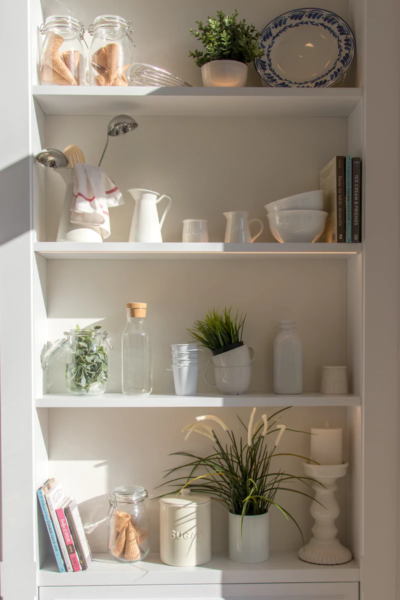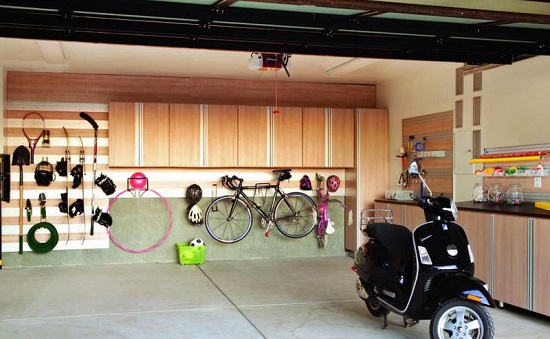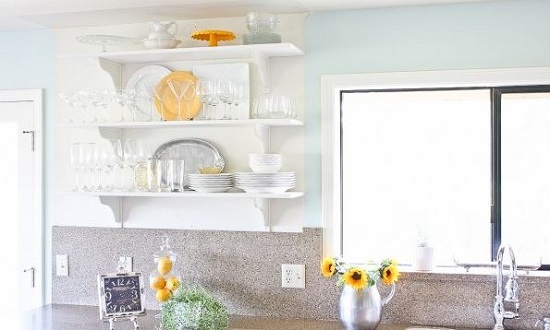
Spring cleaning is an annual rite of passage. There’s something about the warmer weather and longer days that make deep cleaning feel appropriate. If you’re inspired to get your home into tip-top shape, spring cleaning is the perfect excuse to commit!
We’ve rounded up our favorite spring cleaning tips below, plus a tried-and-true process to help you get started. When you’re done, you’ll be left with a clean, fresh space you’ll never want to leave. Whether you’re part of the 75% of Americans that complete an annual spring cleaning or you’re trying it out for the first time, we hope these tips for spring cleaning and organizing make the process easier!
A Thoughtful Approach to Spring Cleaning
If this is your first time participating in a spring cleaning and organizing ritual, the thought of cleaning your entire house can be overwhelming. That’s okay! No matter how many spring cleaning tips you’ve read, getting started can still feel daunting.
The key is to take it step by step, room by room, or project by project. You don’t have to get to every nook and cranny by June, and one completed project is better than none. Once you get the ball rolling, you might be motivated to complete more of your spring cleaning wishlist.
Whether you keep it simple or go for an entire house sweep, spring cleaning ideally involves more than simply cleaning. It helps to start by thinking through your home layout and storage strategy. If it’s not working for you, start there!
With that in mind, here’s a four-step approach to ease you into your spring cleaning project.
1. Remove or move as many items as you can from the space you’re cleaning (including furniture!).
You’re probably eager to get to the “cleaning” part of spring cleaning, but getting extra stuff out of the way is a crucial first step. Get rid of items that don’t belong in the space in the first place, then clear off surfaces and move furniture pieces out of the way. This step makes it easier to access the parts of the room that really need cleaning—and they help you declutter in the process!
As you move things out, return misplaced items to their proper location and make a pile for items that need to be donated or thrown out. You’ll have a better shot at staying organized all year long if you remove the clutter now. Since you’re already in deep cleaning mode, there are no excuses!
Do you struggle with letting go of clutter? Check out our tips on letting go of stuff with sentimental value.
2. Next, move onto cleaning.
After decluttering and moving items away from the space, you’ll have a blank canvas. Time to start cleaning!
Before you really dig in, gather your cleaning supplies so you’re prepared for whatever you find in your space. Here’s what I like to have on hand while I clean:
- Dish soap
- Baking soda
- White vinegar
- Hydrogen peroxide
- Rubbing alcohol
- Salt
- Lemon
- A spray bottle
If scents are important to you, you can also add essential oils or room sprays to the list.
With these ingredients on hand, you’ll never find yourself scrambling to find the right cleaner in the middle of a project. If you’d rather opt for chemical-free cleaners, you can also find online recipes for most surfaces and objects, too!
3. Consider the function of each room or area.
By now, you’ve decluttered a space, moved the furniture, and deep cleaned. Take advantage of this moment to consider how the space works for you. Would a new arrangement better suit your needs? Are you running into common challenges that need to be addressed?
Think about the room’s purpose, organization challenges, and general aesthetics. Small tweaks like new furniture placement or storage containers can greatly impact your day-to-day experience.
4. Finally, create “homes” for each of your belongings.
After all the heavy lifting is done, it’s time to return your belongings to their “homes.” Each item you place back into your space should have a designated place. When everything has a home, it’s much easier to clean up at the end of the day.
If you need to keep something that doesn’t already have a place, take the time now to give it a permanent home. If you live with others, consider telling them where the item belongs, too.
Finding more items that can go into storage instead? Learn about the best ways to store common items here. Then, with a clear strategy in place, move on to the specific spring cleaning tips below!
Spring Cleaning Tips

1. Start by breaking out the warm weather equipment.
If you’re doing spring cleaning on the traditional spring schedule, that means summer is right around the corner. Chances are, most of your warm-weather items are hidden away. Now is the perfect time to pull them out!
Consider outdoor items like grills, lawnmowers, sports equipment, and patio furniture. Hose everything off to ensure that it’s extra clean, and make a note of any related supplies you’ll need for the summer months (like a propane tank for the grill, for example).
If you have smaller selections of summer items, like swim goggles or beach towels, pull those items out, too.
2. Put away winter items.
Now that you’ve pulled out your warm weather equipment, you’ve made room to stow away cold weather items.
Here are some of the items you can easily store in a basement, attic or storage unit until next fall:
- Heavy outerwear
- Winter boots
- Snowblowers
- Shovels
- Winter sports gear
We’ll address the rest of your winter clothing in the closet step, so move on when you’re ready!
3. Switch out linens with lighter fabrics and colors.

Say hello to spring indoors, too. Put away the heavy bedding, fuzzy throws, and velvet pillows to help rid your home of the winter feel. These heavier linens won’t do you much good in the hot summer months, so they might as well be stored away.
If you want to go one step further, change up your curtains. Lighter, sheer materials let in more light—perfect for spring and summer! You can also add plants, mirrors, and lighter wall décor to give the overall impression of a light, airy space.
As a bonus, this step goes a long way toward your main living space feeling less cluttered. Win, win!
4. Switch out your wardrobe.
Did you know the average person only wears 20% of the clothes in their closet on a regular basis? If you come across clothing that you haven’t worn in the last 6–12 months, it’s time to get rid of it! Consider donating these clothes to a local Goodwill or handing them down to loved ones or relatives.
If you’re not quite sure what to get rid of, now is a great time to try the hanger trick! While organizing, hang all your clothes with the hangers flipped backward. (The open side of the hook will face you instead of facing the back of the closet.)
Then, when you put something back in your closet after it’s been worn, switch the hanger back to its regular orientation. In six months, any hangers that are still backward are likely items you should get rid of.
Besides downsizing your wardrobe to make outfit decisions easier, you can also take this time to pack up your fuzzy sweaters and bring out the shorts. Here’s a guide to storing winter clothing in the warmer months.
5. Add closet storage.
As you take out the old, make room for the new!
If you need some extra closet space for your spring clothes and accessories, shelving can help expand your existing space. Salvage your closet’s hidden space by adding double-decker closet rods and wire shelving units.
You can also use bins or shoe racks to make the most of the floor area underneath hanging items. Don’t be afraid to get creative!
Related: 10 Innovative Clothes Storage Ideas When You Have No Closet
6. Skip anything sentimental for now.
If you want an efficient home spring cleaning process, we recommend leaving sentimental items alone until you can dedicate time to really go through them.
Why? After surveying 2,000 Americans on the stuff they store and why, we learned that sentimental connections to our belongings make decluttering much more difficult. If you’ve ever found an old photo album or a box of mementos while cleaning, you know how they can derail the process.
When you’re ready to sit down with your special keepsakes, here are a few resources to help.
- How to Declutter and Let Go of Things You Love
- Need to Clean Out and Organize Your Photos? Start Here
- How to Display, Repurpose and Store Sentimental Cards
7. Dust before vacuuming.
In case your mother never taught you this nugget of wisdom, we thought we’d include it in here. When you try to remove dust, you’ll inevitably stir some up into the air. It’ll settle on the ground, so you should sweep or vacuum after you dust—not before.
Baseboards and ceiling fans are two areas that often get neglected when dusting. They are also areas that collect a disturbing amount of dust. So, don’t forget to add them to your spring cleaning list!
8. Don’t forget the windows.
Over the long winter months, debris like pollen, dirt, and dust can build up along your window sills. And if you’re like most people, your regular window cleaning focuses more on the inside of the panes than the outside.
Cleaning the interior and exterior on a routine basis is important. It’ll let more light into your home and ensure that your windows open and close easily. Getting fresh air in the bedroom is also a great way to alleviate allergens and germs in mattresses.
Looking for a homemade window cleaning solution? We love using ¼ cup of white vinegar mixed with two cups of warm water in a spray bottle.
9. Even furniture can use a spring refresh.
Just because you don’t see stains doesn’t mean your furniture is free of dust, crumbs, dirt, animal fur, or allergens.
Many hardware stores, including major chains like Lowe’s and Home Depot, rent upholstery cleaning machines by the day. There’s no excuse to skip this step just because you lack the equipment!
At the very least, make sure to vacuum upholstered surfaces. If you have other furniture that needs some TLC, double-check that any cleaning supplies you use are made for the furniture’s materials.
10. Extend the lifetime of your mattress by cleaning and flipping it.
Despite linens and mattress pads, mattresses are still popular places for dead skin cells, sweat, and dust. Your mattress should be refreshed twice a year, so add it to your spring cleaning checklist and revisit it again in the fall.
Once your bedding is removed, vacuum over both sides of your mattress to remove any dust or debris. If it’s nice enough outside, the best remedy for your mattress is some fresh air and sunlight. If that’s not feasible, try to get some airflow in your bedroom to mimic the same experience.
If you come across any stains or spots, try this spot-cleaning mixture in a spray bottle:
- 16 oz. hydrogen peroxide
- 2 tablespoons baking soda
- 2 drops of dish soap
Spray the stained area with the mixture, and let it sit for 30-60 minutes before pressing it off with a clean towel. This solution has been magical for my children’s mattresses!
After you’ve cleaned the underside of your mattress, please do yourself a favor and leave it on that side. Over time, pressure from sitting and lying down in the same spots leads to irregular wear. Flipping your mattress twice a year is the best remedy.
11. Wipe down lightbulbs.
This step may seem like overkill, but it’s so simple that it’s worth the effort! Plus, dirty light bulbs emit 20 percent less light than clean ones.
Brighten up your home by giving your lightbulbs a wipe with a damp microfiber cloth. It should only take you a few minutes to go over every bulb in your home. If you have older kids that need to be kept busy while you clean, this is a great job for them as well.
12. Use salt and grapefruit to remove grime from showers and tubs.
Cleaning showers and tubs can feel especially grueling. Thankfully, this mixture of salt and grapefruit cuts down on the elbow grease you’ll need in the process. The grit of the salt mixed with the acid of the grapefruit makes the perfect cleaning solution.
It’ll also give your bathroom that extra boost of freshness that you might expect from a scented candle. It’s one of my favorite all-natural cleaning hacks!
13. Empty your refrigerator.
You knew this was coming—it’s time to clean your refrigerator.
For the most thorough clean, empty and unplug the fridge and freezer altogether. As you take things out, purge anything expired or past its prime. Pay special attention to condiments and sauces that most of us don’t double-check very often. If you have to throw a lot away, you might also like this article about how to store food to maximize its freshness.
With everything out, you’ll have a clean slate to reorganize. Take advantage of adjustable shelving and shelf liners, which will make the cleanup process ten times easier next time around. Then, put all your unexpired food back inside.
If you come across grime needing extra attention, try this homemade fridge cleaning solution. Just mix up one tablespoon of baking soda and a quart of hot water and apply to any stubborn spots.
14. Wash floors last.
After dusting, sweeping and vacuuming, and general reorganizing, your floors will probably need one final clean. Use a damp mop to give your floor a clean shine.
Here’s a recipe I love for homemade floor cleaner:
- ½ cup white vinegar
- 3 drops of dish soap
- ¼ cup rubbing alcohol
- 2 cups of warm water
- 10-20 drops of essential oil for scent (optional)
15. Spend an afternoon in the garage.

For my first five years of homeownership, I truly believed the garage would never be organized. Since it’s one of the largest storage spaces in most homes, it’s easy to start feeling like a “junk room.” Plus, there are so many oddly shaped objects like lawn mowers and gardening tools. It seemed like I’d never find the right arrangement for everything.
It wasn’t until I wrote posts on garage pegboards and garage storage shelves that I realized a space is as organized as you make it. There are tons of spring cleaning ideas to create the storage arrangements you need. For example, a metal cart can also serve as a mobile workbench. Adjustable shelves can display an assortment of containers, including wooden boxes and glass jars containing small hardware.
While you’re spending so much time on your home, your garage deserves some TLC, too. If you find you just have too much stuff, the next tip might help!
16. Consider self-storage.
For seasonal belongings, oversized items, or accessories that just haven’t found a home, renting a storage unit is a space-saving and accessible solution. For fragile items like wood, antiques, or furniture, climate-controlled storage offers protection from humidity, temperature, and the elements. As you tackle your spring cleaning checklist, consider renting a storage unit to get unnecessary items out of your way—either temporarily or long-term!
17. Finish with some natural air-fresheners.

There’s no better way to end a major cleaning session than with a fresh scent in your home. There are plenty of easy (and fun) homemade air fresheners that are perfect for the spring season. Once you’re done deep cleaning, try one of these:
- Fresh flowers. Buy (or pick) a bouquet of fresh-scented flowers and place them in a vase right in front of your window. The breeze will blow the scent all around your home.
- Stovetop freshener. Place fresh orange and lemon peels in a pot on the stove and bring the water to a light simmer. The fresh spring scent will travel through every room of your house! Just make sure to turn off the burner if your stove is unattended.
- Essential oil spray. Create a mix of essential oils (distilled water and 5–10 drops of lemon or lavender) and place in a diffuser or a spray bottle. Spritz around your home as you wish. Note that some essential oils are unsafe for pets, so double-check before you spritz!
- Oil-soaked cotton balls for garbage cans. Soak a cotton ball in an essential oil such as rosemary and place it in the trash can in your kitchen, bedroom, or bathroom. Every time the lid opens and closes, it will fill the room with a natural, fresh scent. This is a great hack to reuse year-round.
18. Establish a cleaning schedule going forward.
Congratulations on a job well done! Now that your spring cleaning checklist is complete, make a plan to sustain your space over time.
Think about the chores that tend to become overdue in your home. Is there a barrier that’s making them more difficult? Would a different schedule be helpful? Or, if possible, could you delegate those chores altogether?
Don’t let all your hard work go to waste. The more often you tackle chores like laundry, dusting, and vacuuming, the less often you’ll have to do a thorough, tough clean like this one.
19. Nip bad organization habits in the bud.
When you stand back and look at your pristine home, you might just find the motivation you need to work on your negative home care habits. Focusing on organization is difficult when your home is messy, so take advantage of your clean space!
Use this time to create a long-term organization schedule. Decide which tasks need to be completed daily or weekly and which tasks need a periodic check-in every once in a while. For irregular tasks, it can help to add reminders to your calendar whenever they’ll need to be done next.
Spring cleaning may be a lot of work, but that’s why it only comes once a year. Now that you have a fresh and clutter-free home, keep it that way. You deserve it!
Editor’s Note: This post was originally published on March 19, 2015, and was revised on March 30, 2020 & July 11th, 2023.


